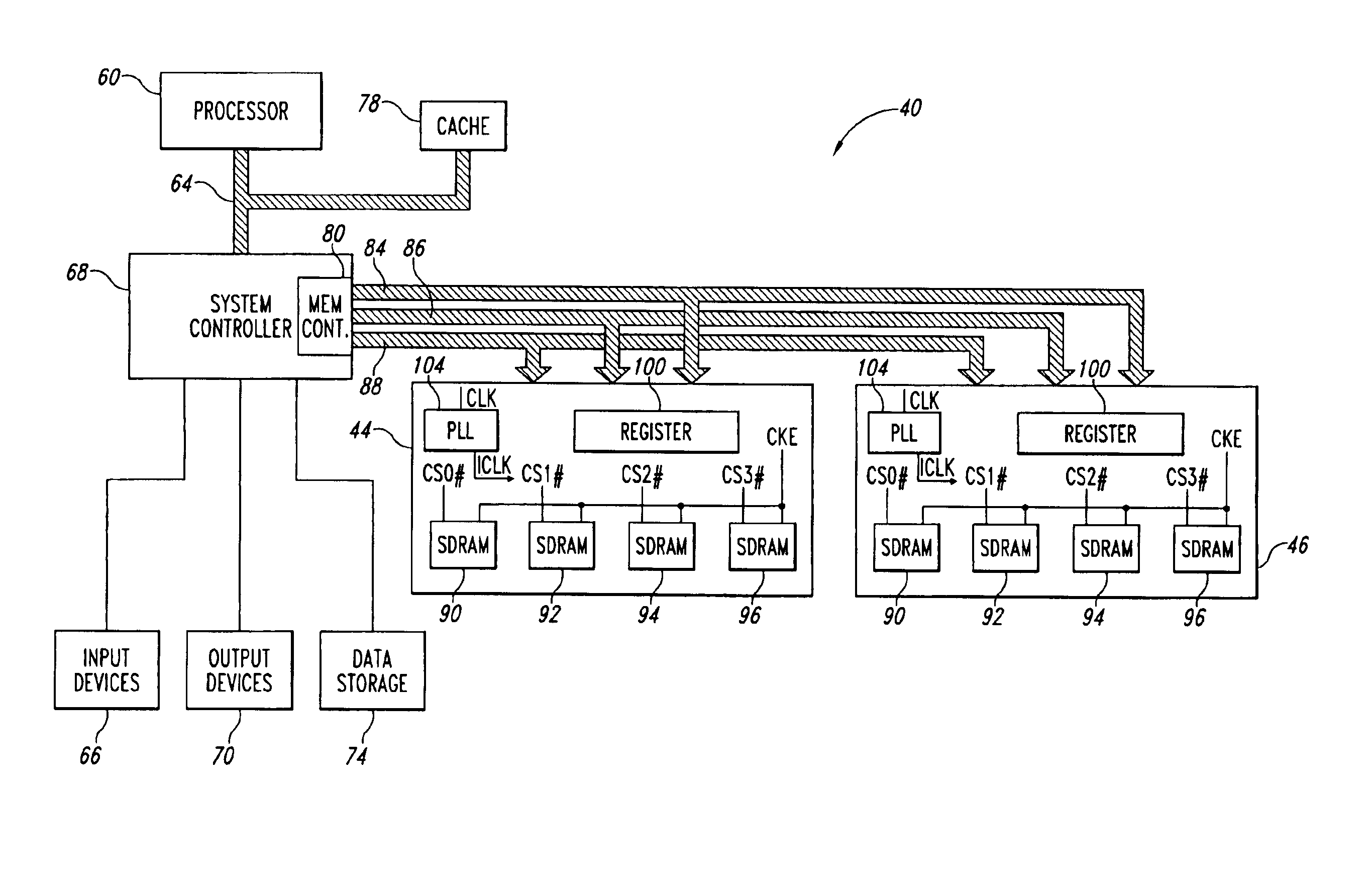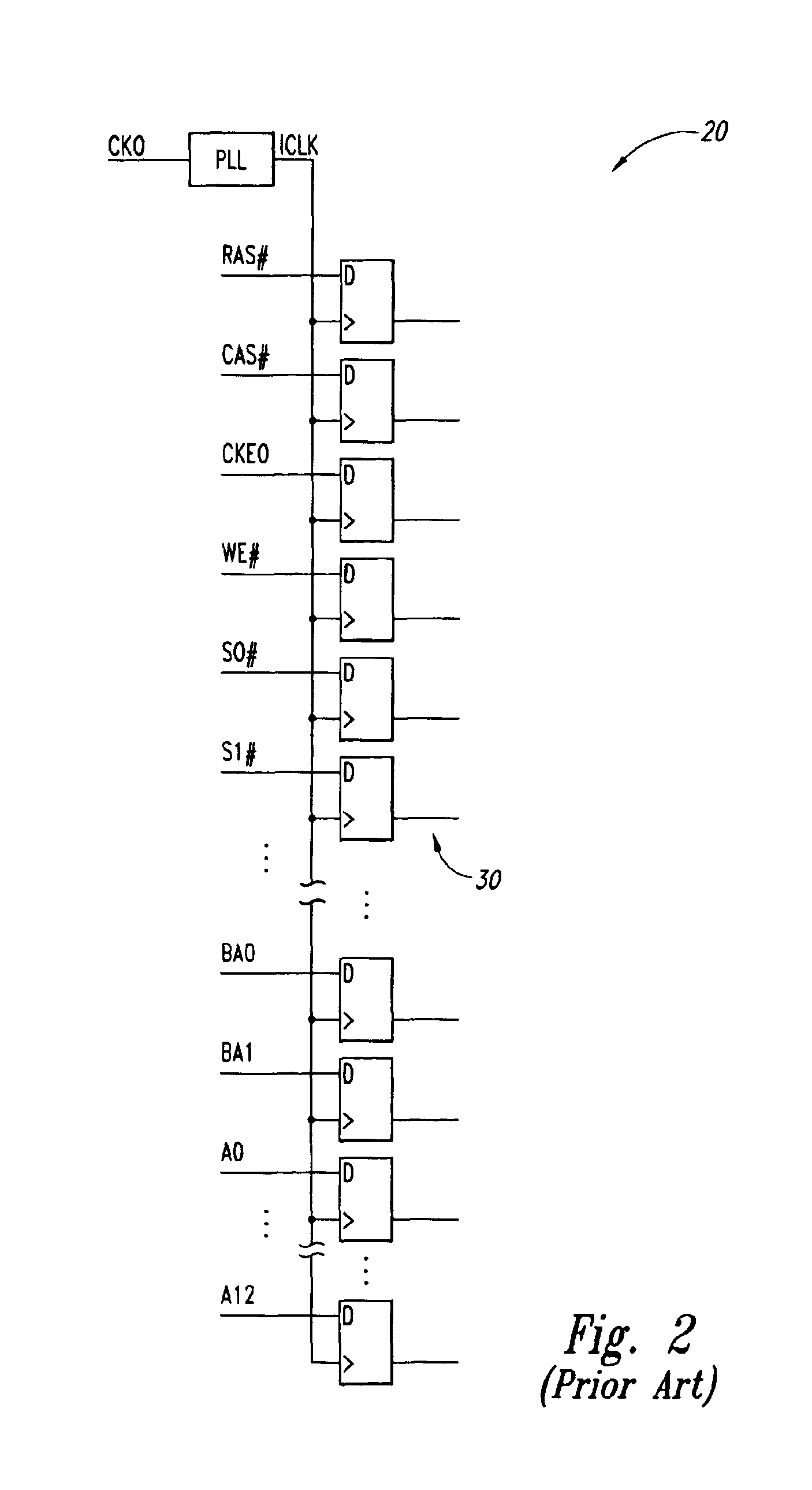Reduced power registered memory module and method
a memory module and power register technology, applied in the direction of information storage, static storage, digital storage, etc., can solve the problems of constant demand for memory capacity and speed, power consumption each, and inability to meet the requirements of ever increasing memory capacity and speed
- Summary
- Abstract
- Description
- Claims
- Application Information
AI Technical Summary
Benefits of technology
Problems solved by technology
Method used
Image
Examples
Embodiment Construction
[0015]A computer system 40 containing two registered DRAM modules 44, 46 in accordance with one embodiment of the invention is shown in FIG. 3. The computer system 40 includes a processor 60 for performing various computing functions, such as executing specific software to perform specific calculations or tasks. The processor 60 is coupled to a processor bus 64 that normally includes an address bus, a control bus, and a data bus. In addition, the computer system 40 includes one or more input devices 66, such as a keyboard or a mouse, coupled to the processor 60 through a system controller 68 to allow an operator to interface with the computer system 40. Typically, the computer system 40 also includes one or more output devices 70 coupled to the processor 60 through the system controller 68, such output devices typically being a printer or a video terminal. One or more data storage devices 74 are also typically coupled to the processor 60 through the system controller 68 to allow the...
PUM
 Login to View More
Login to View More Abstract
Description
Claims
Application Information
 Login to View More
Login to View More - R&D
- Intellectual Property
- Life Sciences
- Materials
- Tech Scout
- Unparalleled Data Quality
- Higher Quality Content
- 60% Fewer Hallucinations
Browse by: Latest US Patents, China's latest patents, Technical Efficacy Thesaurus, Application Domain, Technology Topic, Popular Technical Reports.
© 2025 PatSnap. All rights reserved.Legal|Privacy policy|Modern Slavery Act Transparency Statement|Sitemap|About US| Contact US: help@patsnap.com



